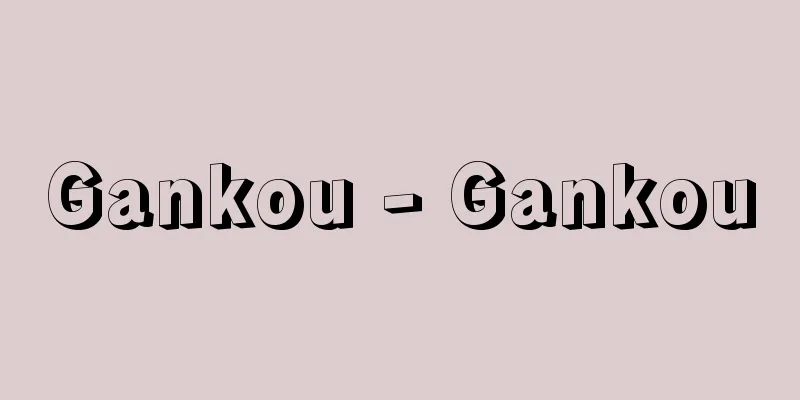Jikishinkage-ryu

|
A leading school of swordsmanship in the early modern period. It is a new style that emerged from the Kyoho era (1716-36) to the Tanuma period, and was founded by Yamada Ippūsai Mitsunori (1639-1716). Mitsunori, commonly known as Heizaemon, was from Shimotsuke Province, and initially studied the Jikishin Shōtōichi style under Takahashi Danjōzaemon Shigeharu (Jikiō), but was not satisfied with this and studied various styles such as the Unchū style of the Yagyu school before returning to his own school at the age of 36. In 1686 (Jokyo 3), at the age of 48, he was granted the inkan (certification of the martial arts) and served Lord Nagai of the Karasuyama Domain in Shimotsuke Province, where he was awarded the rank of Monogashira (master swordsman) and a fief of 150 koku. In 1710 (Hoei 7), he went to Edo, and together with his third son Hayata, who was making remarkable progress as a swordsman, he opened a dojo in Nishikubo, Shiba, commonly known as Edomizaka, and called himself the 7th Kashima Shinden, and established a new school name, Jikishinkage-ryu. In 1716 (Kyoho 1), Hayata, who changed his name to Naganuma Shirōzaemon Kunisato (1688-1767), succeeded him as the second generation, and was known by the public as "a modern master with a great number of disciples, and was called the best in the eastern capital" (Gekiken Soudan). In particular, during the Horeki era (1751-1764), he continued to improve upon the protective gear he had begun to use during his Ippu period, "eliminating the iron mask, covering the arms with cotton gloves, and beginning practical training with a bamboo sword that was three feet four inches long, in accordance with the length of his sword." This was a great achievement that brought a breath of fresh air to the stagnant world of swordsmanship at the time. His third son, Tokugo, who succeeded Kunigo, died young at the age of 36 in 1777 (6th An'ei), but his adopted son, Masabei Tsunasato, who had opened a dojo in nearby Atagoshita, assisted the main family and expanded the school. After this, successive generations of the school served as instructors to the Lord of Toki in Numata, Kozuke Province, but the eighth master, Shobei Shingo, who lived at the end of the Edo period, was well known for his swordsmanship, and trained such renowned swordsmen as Shogo (Kashojin), who succeeded him as the ninth master, Abe Ugenji, and Tokuno Kanshiro. Furthermore, in 1756 (the 6th year of the Horeki era) Tsunasato's disciple Fujikawa Yajiroemon Chikayoshi opened a dojo in Chojamachi, Shitaya, which is said to have had 3,000 disciples, taking advantage of its location and producing swordsmen such as Akaishi Gunjibee, Inoue Hachiro, and Sakai Ryosuke. Next came Danno Gennoshin and Ishikawa Seheiji from the Akaishi school, and from the Danno dojo came Odani Seiichiro Nobutomo, who became the swordsmanship instructor at the Kobusho, and trained many other talented swordsmen, including Shimada Toranosuke, Sakakibara Kenkichi, and Yokokawa Shichiro. In this way, Jikishinkage-ryu spread to various domains throughout the country, and became a major force in the kendo world at the end of the Edo period. [Ichiro Watanabe] Source: Shogakukan Encyclopedia Nipponica About Encyclopedia Nipponica Information | Legend |
|
近世剣術の一流。享保(きょうほう)(1716~36)から田沼期に台頭した新流で、流祖は山田一風斎光徳(いっぷうさいみつのり)(1639―1716)。光徳は通称平左衛門(へいざえもん)、下野(しもつけ)国の出身で、初め高橋弾正左衛門重治(だんじょうざえもんしげはる)(直翁(じきおう))の門に入って、直心正統一(じきしんしょうとういち)流を学んだが、これに飽き足らず、柳生(やぎゅう)門の運籌(うんちゅう)流などの諸流を修めて36歳のとき帰門。1686年(貞享3)48歳で的伝の印可を許され、下野烏山(からすやま)藩永井侯に仕え、物頭(ものがしら)、知行(ちぎょう)150石を賜った。1710年(宝永7)江戸へ出て、剣士として進境著しい三男隼太(はやた)と父子協力して、芝西久保、通称江戸見坂に道場を開き、自ら鹿島神伝(かしましんでん)7代を称し、流名を新たに直心影流をたてた。16年(享保1)隼太改め長沼四郎左衛門国郷(くにさと)(1688―1767)が2代を継いだが、世評に「近代の名人にして門人甚だ多し、東都にて第一と称せられ」(撃剣叢談(そうだん))るに至った。とくに宝暦(ほうれき)年間(1751~64)一風時代から着手した防具の改良を進め、「鉄の仮面を制し、綿甲(小手)膊(はく)を覆い、剣長に準じて三尺四寸の竹刀(ちくとう)をもって実戦稽古(けいこ)を始めた」のが時流に投じ、沈滞した当時の剣術界に新風を吹き込んだ功績は大であった。 国郷の跡を継いだ三男徳郷は1777年(安永6)36歳で夭逝(ようせい)したが、近くの愛宕(あたご)下で道場を開いていた義子の正兵衛綱郷が、よく本家を補佐して流勢を広げた。こののち代々上州沼田藩土岐(とき)侯の師範役を勤めたが、幕末の8代笑兵衛恂郷は剣名が高く、9代を継いだ称郷(可笑人)や阿部右源次(うげんじ)、得能関四郎(とくのうかんしろう)らの名剣士を養成した。また綱郷の高弟藤川弥司郎右衛門近義(やじろうえもんちかよし)が1756年(宝暦6)下谷(したや)長者町に開いた町道場も地の利を得て門弟3000人といわれ、赤石郡司兵衛(ぐんじべえ)、井上八郎、酒井良佑(りょうすけ)らの剣客を輩出した。ついで赤石の門からは団野源之進、石川瀬平二(せへいじ)らが、さらに団野の道場からは、講武所剣術師範役となった男谷(おだに)精一郎信友が出て、島田虎之助(とらのすけ)、榊原鍵吉(さかきばらけんきち)、横川七郎ら、多くの逸材を育成した。こうして直心影流は全国諸藩に広がり、幕末剣道界の一大勢力を形成した。 [渡邉一郎] 出典 小学館 日本大百科全書(ニッポニカ)日本大百科全書(ニッポニカ)について 情報 | 凡例 |
<<: Magnetic map - magnetic field
>>: Direct vassal - direct vassal
Recommend
Othensve
...Population: 184,000 (1996). The name of the to...
Big-leafed mahogany
…Mahogany is famous as the world's finest woo...
Mount Gagyu (Hokkaido) - Gagyusan
...334m above sea level. A volcano that erupted i...
English foxhound
A breed of dog. A hunting dog from England, used f...
Anatayama - Anatayama
...Even in everyday life, people say "atarim...
Euphorbia inermis (English spelling)
… [Hiroshi Yuasa]. … *Some of the terminology tha...
Northern snail rhinoceros beetle - Northern snail rhinoceros beetle
...They are distributed from Hokkaido to Kyushu (...
Usugeyamazakura - Usugeyamazakura
...It grows in the mountains and fields of Honshu...
Cirsium pendulum (English spelling) Cirsiumpendulum
…[Hiroshi Aramata]. … *Some of the terminology ex...
Order of magnitude - Isou (English spelling)
In mathematics, many objects, including symbols ex...
North Ossetia [Republic] - Severnaya Osetiya (English spelling)
A republic in the North Caucasus, southwest of the...
Krētē (English spelling) Krete
…The largest Greek island in the Aegean Sea. Its ...
Red Windmill
A British film produced in 1952. Original title: M...
Shirvanshah
A medieval Sunni Islamic dynasty in the eastern Ca...
Tokyo University of Science
It is a private university. Its predecessor was t...









